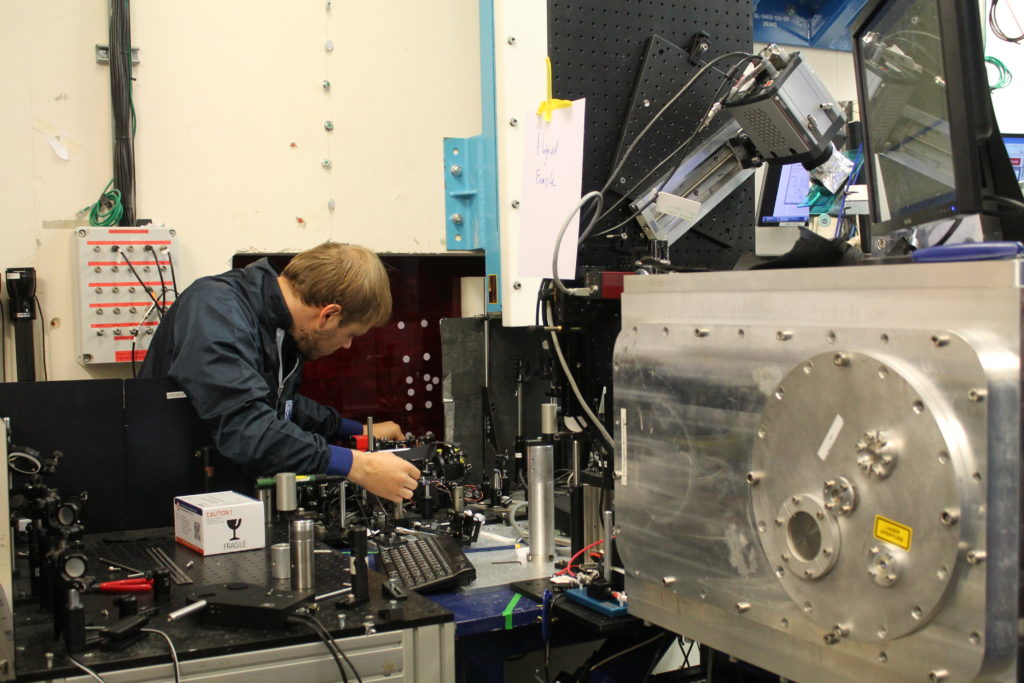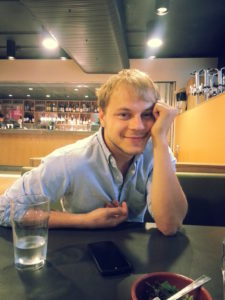Where in London do you live?
Just recently I moved to Lewisham, a small old village in Southeast London that the expanding city swallowed up. The houses here are mostly two or three story buildings and the streets are very quiet. However, Imperial College, where I’m studying, is located in South Kensington, which is one of the wealthiest areas of London. Here you’ll find the embassies of all the larger countries and the buildings cost tens of millions.
It takes me an hour every day to get to school and another hour to get back home.
How are you planning on using the stipend?
Mostly it is good to be recognised because it shows that someone values what I am doing. Considering the prices in London, the stipend covers about 2/3 of one month’s rent – you can totally get used to sharing an apartment – so it’s not exactly a life changing event. I suppose I’ll buy some electronics, like a tablet as a little prize for myself. You have to read hundreds of articles when you’re writing a doctoral thesis and doing that on a laptop on the metro is rather uncomfortable. Now I can use that transit time in a more useful way.
What is the focus of your doctoral thesis?
Particle acceleration. Right now we are doing experiments that are analogous to the ones that are being carried out in Switzerland at CERN. However, while the CERN accelerator is humongous, because the accelerating electrical field is limited, then we can accelerate particles at distances that are one ten-thousandth of theirs. However, that “pure science” is only one output of the research – the other is medicinal. When electrons are accelerated they emit x-ray radiation and its pulse is so short that the amount of radiation that reaches the patient is significantly lower than with conventional x-ray technology. That means the radiation is also safer than conventional x-rays. At the same time, the length of the x-ray is only 1-2 microns, which means that we can use the phase contrast imaging method, which creates an image where the diseased tissue is clearly differentiated on the picture from healthy tissue, with sharply visible outlines. On regular x-ray images, cancerous tissues often times look very similar to healthy tissues. We are trying to demonstrate that this is a diagnostic tool with huge potential.

How big is the small accelerator?
The accelerator itself is very compact, about a centimeter long, and it’s filled with gas; however, the laser that drives the whole thing is very big, let’s say, half a tennis court. Its intensity is immense. If you were to take all the sunlight that falls on the Earth and focus it on an area the size of a needle’s point, the intensity would still be significantly less than that of the laser we are using. Now when you take that laser beam and direct it through gas, the gas instantly becomes plasma and when the beam moves through plasma, it creates a wave in its wake, like the waves that boats make as they move through water.
A tiny void appears behind the laser impulse and if you place electrons into that void and they move forward at nearly the speed of light, the structure of the plasma accelerator gives them a lot of energy.
Would it be possible that a small black hole appears during an experiment?
(Something like a suppressed smile appears). Considering what I know about physics, I’d say that is highly unlikely. At the moment we’ve succeeded in accelerating particles to speeds that are 10 000 times slower than those at CERN. At the same time, one of the founding pillars of quantum mechanics, which plays a significant role in modern physics, is that we really don’t know what goes on. A vacuum isn’t really a vacuum, since pairs of matter and antimatter particles are constantly forming in it, annihilating each other, and so on. From the classics we know that if you want to photograph something that is happening very fast, you have to make the image capture device perform even faster – for example, they used to bet on whether galloping horses had all four legs in the air at once. Only pictures that were taken with a very short exposure time showed that for a fraction of a second they really are. Since the technology to record what happens in an accelerator doesn’t exist yet – the whole process takes about as much time as it takes for light to move one centimeter, which is about 33 picoseconds or 10 to the -11th degree – for the most part we are fumbling in the dark and we have to rely on computer simulations.
The particle energy that comes out of the accelerator is something we can measure, but everything that happens in the meantime is simulated. For that simulation, we have enormous supercomputers running codes that continuously solve Maxwell’s equations step-by-step and try to understand how the particles acted in the plasma. We actually don’t have any other methods. Moreover, the results can be very different, depending on how much experience the person carrying out the experiment has. It is a very multilinear process and the slightest changes to initial parameters can alter the end result in a colossal way.
Sorry, but what are Maxwell’s equations?
These are equations created by the 19th century physicist James Clerk Maxwell, who was the first to realize that light is actually an electromagnetic wave, one of its forms. Maxwell’s equations are fundamental in physics, especially in electromagnetics.
Who is your biggest hero?
Richard Feynman, who also received the Nobel Prize in 1964. He was a physics genius, one of the most intelligent people of the 20th century, who contributed a lot to teaching others and to passing on the wonder he found in physics. The Feynman Lectures on Physics is legendary among physicist, since it is nearly singular how well everything in the book is explained. However, he was also a very colorful personality – when he lived in the US, he went to work every day in a strip bar because it was calm there. He liked to sit down, drink coke and do physics for a couple of hours. When they wanted to shut down the strip bar, Feynman even went to court at the request of the owner and testified how the establishment is a very exemplary and forward thinking one, as well as a necessary place for the society and science.
However, that last bit is, of course, not the reason why he is my hero.
Who did you want to be as a child?
Brrrrr… a scientist, I guess? (A hesitant pause) I wanted to be someone who takes things apart and looks at what happens inside and why. That could have just as well been an auto mechanic or a plumber, because they’re scientists too, it’s just that my tools are a little more sophisticated than wrenches are – or rocks or branches.
What do you think about the fear of refugees in Estonia?
It seems… odd. I’ve been trying to keep an eye on that. Mass migration is clearly a huge crisis for European society, however, in Estonia it seems that people say things without basing them on facts and as a scientist I am disturbed by this war of words that doesn’t take the reality into account anymore. It’s particularly sad when politicians are the ones doing it, because a lot of people take their words as the truth. There are already rumors about thousands of refugees being sneaked into Estonia, while in actuality only a very small number have been accepted. It’s a little like Donald Trump’s call on the country to shut the door for all Muslims, even though there are just 2000 Syrian refugees who have reached the US now and considering their population of 300 million, that’s nothing.
What would bring you back to Estonia?
I know things that people in Estonia don’t and I would like to pass that on to them.
You in 2030?
I think I’ll be a professor at some university and I’ll have three children, all of whom are studying physics.
Dog or cat?
Dog. Always a dog.
Ketchup or mustard?
By now it’s mustard.
Favorite month?
July.
Favorite number?
Pi.
Favorite browser?
Chrome. By far.
An ugly color?
Magenta… I think.
Tea or coffee?
I have never drunk coffee.
Bus or train?
Train.
Fir or oak?
Rather fir?
East or west?
Rather west.
South or north?
North.


